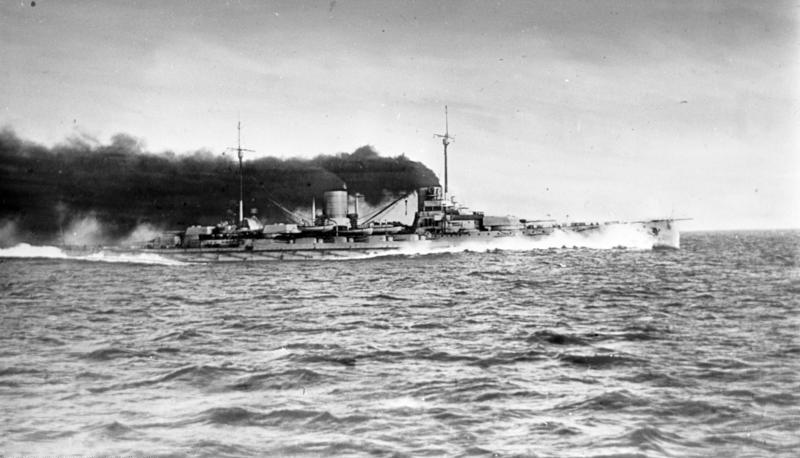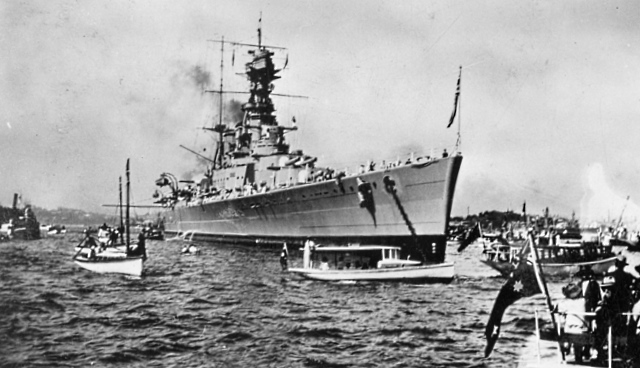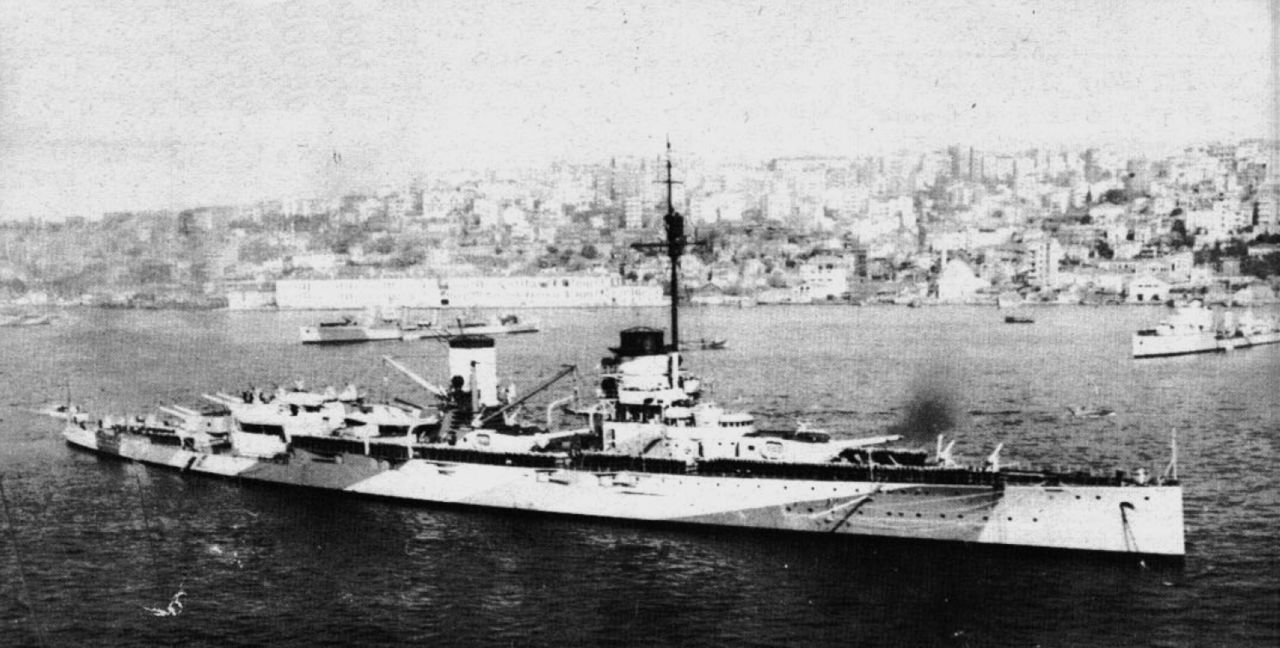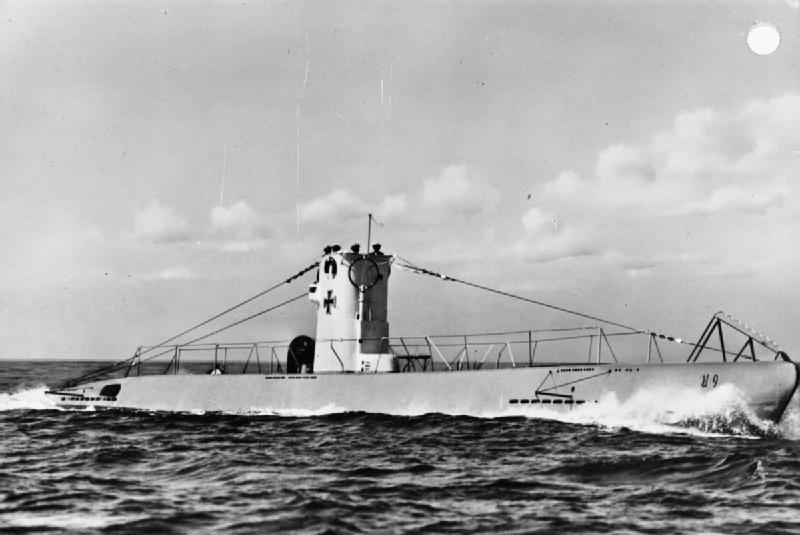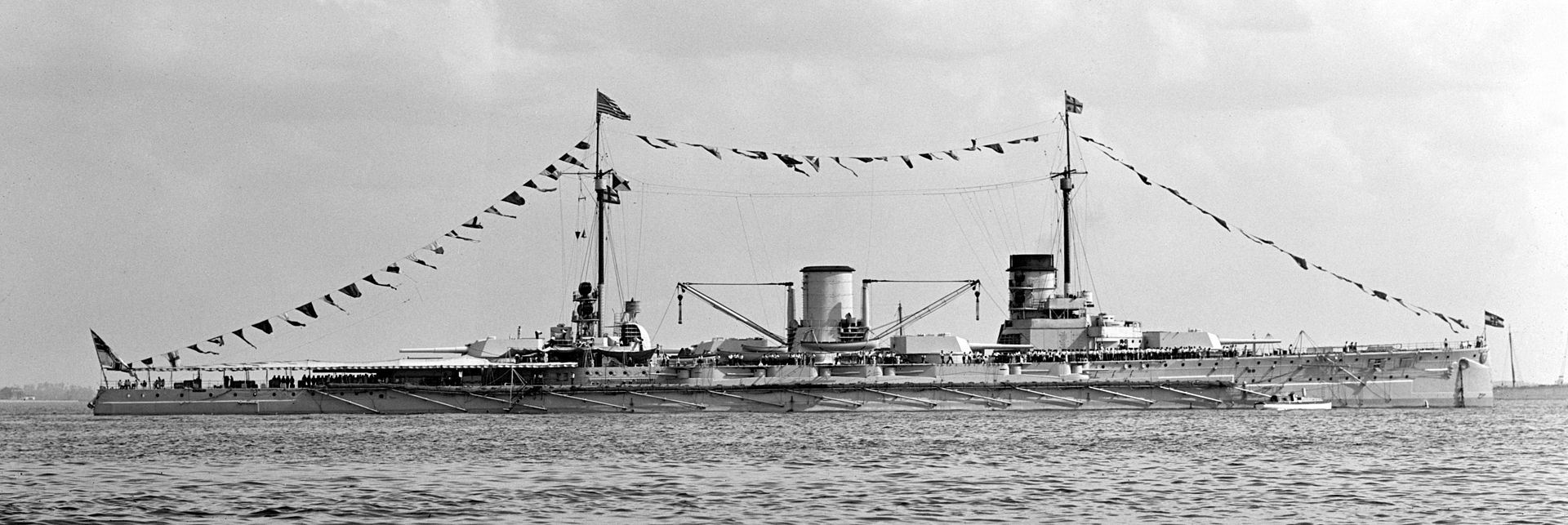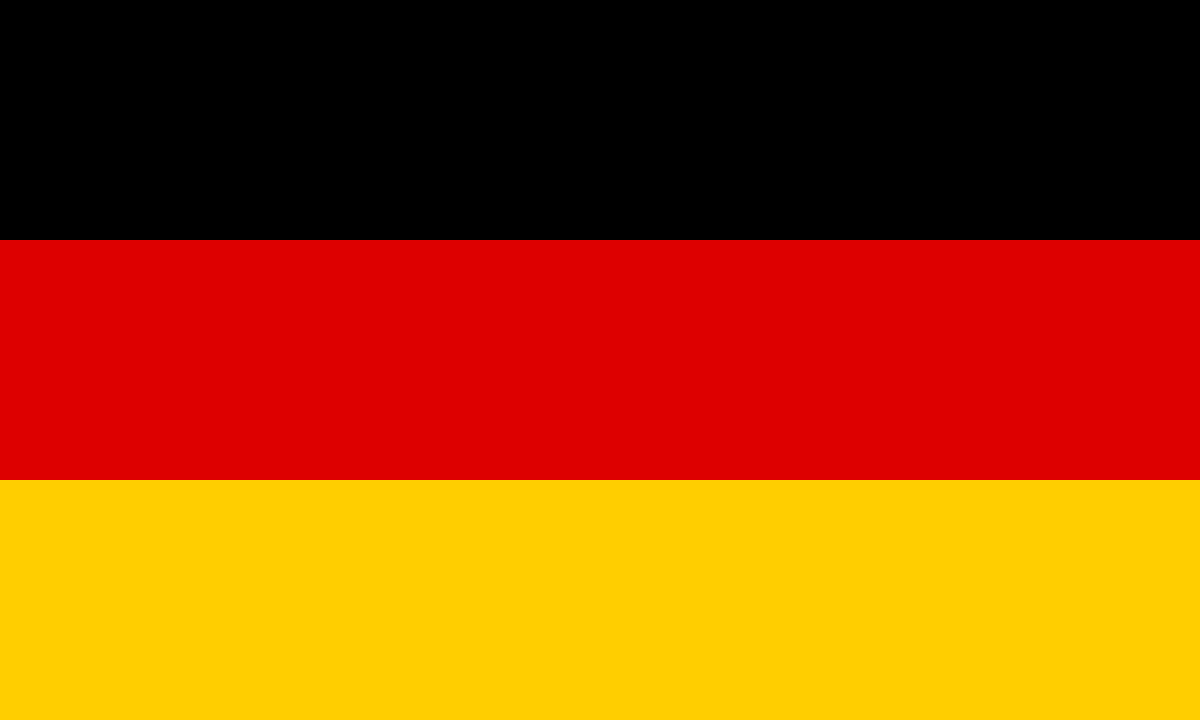History: SMS Goeben was the second of two Moltke-class battlecruisers of the Imperial German Navy, launched in 1911 and named after the German Franco-Prussian War veteran General August Karl von Goeben. Along with her sister ship, Goeben was similar to the previous German battlecruiser design, Von der Tann, but larger, with increased armor protection and two more main guns in an additional turret. Goeben and Moltke were significantly larger and better armored than the comparable British Indefatigable class.
Several months after her commissioning in 1912, Goeben, with the light cruiser Breslau, formed the German Mediterranean Division and patrolled there during the Balkan Wars. After the outbreak of World War I on 28 July 1914, Goeben and Breslau bombarded French positions in North Africa and then evaded British naval forces in the Mediterranean and reached Constantinople. The two ships were transferred to the Ottoman Empire on 16 August 1914, and Goeben became the flagship of the Ottoman Navy as Yavuz Sultan Selim, usually shortened to Yavuz. By bombarding Russian facilities in the Black Sea, she brought Turkey into World War I on the German side. The ship operated primarily against Russian forces in the Black Sea during the war, including several inconclusive engagements with Russian battleships. She made a sortie into the Aegean in January 1918 that resulted in the Battle of Imbros, where Yavuz sank a pair of British monitors but was herself badly damaged by mines.
Several months after her commissioning in 1912, Goeben, with the light cruiser Breslau, formed the German Mediterranean Division and patrolled there during the Balkan Wars. After the outbreak of World War I on 28 July 1914, Goeben and Breslau bombarded French positions in North Africa and then evaded British naval forces in the Mediterranean and reached Constantinople. The two ships were transferred to the Ottoman Empire on 16 August 1914, and Goeben became the flagship of the Ottoman Navy as Yavuz Sultan Selim, usually shortened to Yavuz. By bombarding Russian facilities in the Black Sea, she brought Turkey into World War I on the German side. The ship operated primarily against Russian forces in the Black Sea during the war, including several inconclusive engagements with Russian battleships. She made a sortie into the Aegean in January 1918 that resulted in the Battle of Imbros, where Yavuz sank a pair of British monitors but was herself badly damaged by mines.
Class: The Moltke class was a class of two "all-big-gun" battlecruisers[a] of the German Imperial Navy built between 1909–1911. Named SMS Moltke and SMS Goeben,[b] they were similar to the previous battlecruiser Von der Tann , but the newer design featured several incremental improvements. The Moltkes were slightly larger, faster, and better armored, and had an additional pair of 28 centimeter guns.
Both ships served during World War I. Moltke participated in several major battles with the rest of the High Seas Fleet, including the battles of Dogger Bank and Jutland in the North Sea, and the Battle of the Gulf of Riga and Operation Albion in the Baltic Sea. At the end of the war, Moltke was interned with the majority of the High Seas Fleet at Scapa Flow while the ships' fate was being discussed during peace treaty negotiations. The ships were scuttled on 21 June 1919 to prevent their seizure by the Allies.
Goeben was stationed in the Mediterranean at the start of the war; she escaped from pursuing Royal Navy ships to Constantinople. The ship, along with the light cruiser Breslau, was transferred to the Ottoman Navy soon after arrival. Strategically, Goeben played a very important role: she helped bring the Ottoman Empire into the war as a member of the Central Powers, and by acting as a fleet in being the ship prevented Anglo-French attempts to force the Bosporus, and similarly stymied a possible advance by the Russian Black Sea Fleet. Goeben was retained by the new Turkish government after the war. Only slightly modified from her original configuration, the ship remained on active service with the Turkish Navy until being decommissioned on 20 December 1950; she was stricken from the Navy register on 14 November 1954. Two years earlier, when Turkey joined NATO in 1952, the ship was assigned the hull number B70.[3] The ship was unsuccessfully offered for sale to the West German government in 1963. Without a group willing to preserve her as a museum, the ship was sold to M.K.E. Seyman in 1971 for scrapping. She was towed to the breakers on 7 June 1973, and the work was completed in February 1976.
Both ships served during World War I. Moltke participated in several major battles with the rest of the High Seas Fleet, including the battles of Dogger Bank and Jutland in the North Sea, and the Battle of the Gulf of Riga and Operation Albion in the Baltic Sea. At the end of the war, Moltke was interned with the majority of the High Seas Fleet at Scapa Flow while the ships' fate was being discussed during peace treaty negotiations. The ships were scuttled on 21 June 1919 to prevent their seizure by the Allies.
Goeben was stationed in the Mediterranean at the start of the war; she escaped from pursuing Royal Navy ships to Constantinople. The ship, along with the light cruiser Breslau, was transferred to the Ottoman Navy soon after arrival. Strategically, Goeben played a very important role: she helped bring the Ottoman Empire into the war as a member of the Central Powers, and by acting as a fleet in being the ship prevented Anglo-French attempts to force the Bosporus, and similarly stymied a possible advance by the Russian Black Sea Fleet. Goeben was retained by the new Turkish government after the war. Only slightly modified from her original configuration, the ship remained on active service with the Turkish Navy until being decommissioned on 20 December 1950; she was stricken from the Navy register on 14 November 1954. Two years earlier, when Turkey joined NATO in 1952, the ship was assigned the hull number B70.[3] The ship was unsuccessfully offered for sale to the West German government in 1963. Without a group willing to preserve her as a museum, the ship was sold to M.K.E. Seyman in 1971 for scrapping. She was towed to the breakers on 7 June 1973, and the work was completed in February 1976.
Nationality: Germany is a Western European country with a landscape of forests, rivers, mountain ranges and North Sea beaches. It has over 2 millennia of history. Berlin, its capital, is home to art and nightlife scenes, the Brandenburg Gate and many sites relating to WWII. Munich is known for its Oktoberfest and beer halls, including the 16th-century Hofbräuhaus. Frankfurt, with its skyscrapers, houses the European Central Bank.
Item created by: gdm on 2019-04-28 22:55:38. Last edited by gdm on 2019-04-28 22:57:56
If you see errors or missing data in this entry, please feel free to log in and edit it. Anyone with a Gmail account can log in instantly.
If you see errors or missing data in this entry, please feel free to log in and edit it. Anyone with a Gmail account can log in instantly.


